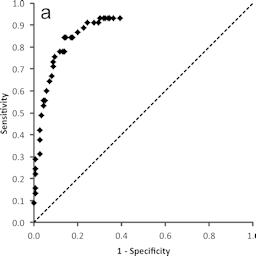Predictivity of the kinetic direct peptide reactivity assay (kDPRA) for sensitizer potency assessment and GHS subclassification
Main Article Content
Abstract
Several in vitro OECD test guidelines address key events 1-3 of the adverse outcome pathway for skin sensitization, but none are validated for sensitizer potency assessment. The reaction of sensitizing molecules with skin proteins is the molecular initiating event and appears to be rate-limiting, as chemical reactivity strongly correlates with sensitizer potency. The kinetic direct peptide reactivity assay (kDPRA), a modification of the DPRA (OECD TG 442C), allows derivation of rate constants of the depletion of the cysteine-containing model peptide upon reaction with the test item. Its reproducibility was demonstrated in an inter-laboratory study. Here, we present a database of rate constants, expressed as log kmax, for 180 chemicals to define the prediction threshold to identify strong sensitizers (classified as GHS 1A). A threshold of log kmax -2 offers a balanced accuracy of 85% for predicting GHS 1A sensitizers according to the local lymph node assay. The kDPRA is proposed as a stand-alone assay for identification of GHS 1A sensitizers among chemicals identified as sensitizers by other tests or defined approaches. It may also be used for the prediction of sensitizer potency on a continuous scale, ideally in combination with continuous parameters from other in vitro assays. We show how the rate constant could be combined with read-outs of other in vitro assays in a defined approach. A decision model based on log kmax alone has, however, a high predictivity and can be used as stand-alone model for identification of GHS 1A sensitizers among chemicals predicted as sensitizers.
Article Details

This work is licensed under a Creative Commons Attribution 4.0 International License.
Articles are distributed under the terms of the Creative Commons Attribution 4.0 International license (http://creativecommons.org/licenses/by/4.0/), which permits unrestricted use, distribution and reproduction in any medium, provided the original work is appropriately cited (CC-BY). Copyright on any article in ALTEX is retained by the author(s).


